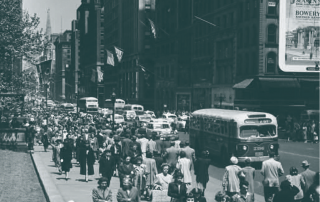Vibrant Sidewalks in the United States: Re-integrating Walking and a Quintessential Social Realm
Anastasia Loukaitou-Sideris and
Renia Ehrenfeucht
As a transportation mode, walking is healthy for individuals and beneficial for the environment. Fifteen years ago, the US Surgeon General highlighted the importance of walking for exercise as a means of combating obesity, diabetes, and other diseases. Since then, a wealth of studies published in public health and medical journals have extolled the virtues of walking. Moved by concerns about climate change, energy, and congestion, transportation planners now view walking as an inexpensive and enjoyable activity that could replace short auto trips, thus reducing congestion and fossil fuel consumption. Yet despite the general consensus that walking brings many benefits, policymakers still aren’t sure how to increase the amount of walking people actually do. One of the most obvious approaches is to improve pedestrian infrastructure. Walking is harder in places without good sidewalks, and the sidewalks in many cities are in terrible disrepair. Many other places have no sidewalks at all. But good sidewalks, while important, will not by themselves lead to more walking. Changes in the built environment are a necessary but not sufficient condition for a pedestrian-friendly city.

